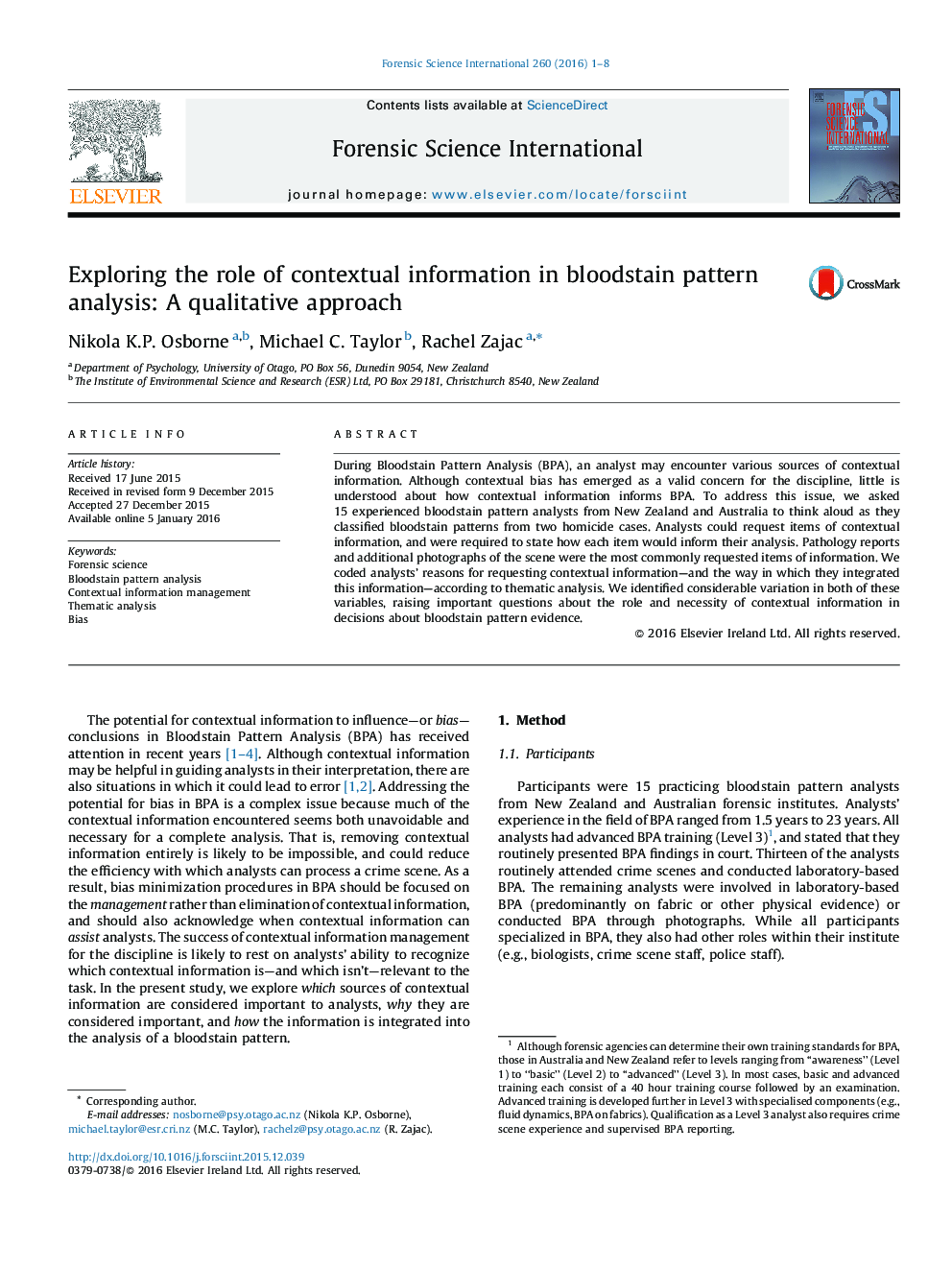| کد مقاله | کد نشریه | سال انتشار | مقاله انگلیسی | نسخه تمام متن |
|---|---|---|---|---|
| 95203 | 160418 | 2016 | 8 صفحه PDF | دانلود رایگان |
• Most analysts viewed contextual information as an integral part of BPA.
• Analysts requested an average of four items of contextual information.
• Scene photographs and the pathology report were the most frequently requested items.
• Reasons for requesting context varied across analysts and across context items.
• Findings can help to inform contextual information management for BPA.
During Bloodstain Pattern Analysis (BPA), an analyst may encounter various sources of contextual information. Although contextual bias has emerged as a valid concern for the discipline, little is understood about how contextual information informs BPA. To address this issue, we asked 15 experienced bloodstain pattern analysts from New Zealand and Australia to think aloud as they classified bloodstain patterns from two homicide cases. Analysts could request items of contextual information, and were required to state how each item would inform their analysis. Pathology reports and additional photographs of the scene were the most commonly requested items of information. We coded analysts’ reasons for requesting contextual information—and the way in which they integrated this information—according to thematic analysis. We identified considerable variation in both of these variables, raising important questions about the role and necessity of contextual information in decisions about bloodstain pattern evidence.
Journal: Forensic Science International - Volume 260, March 2016, Pages 1–8
